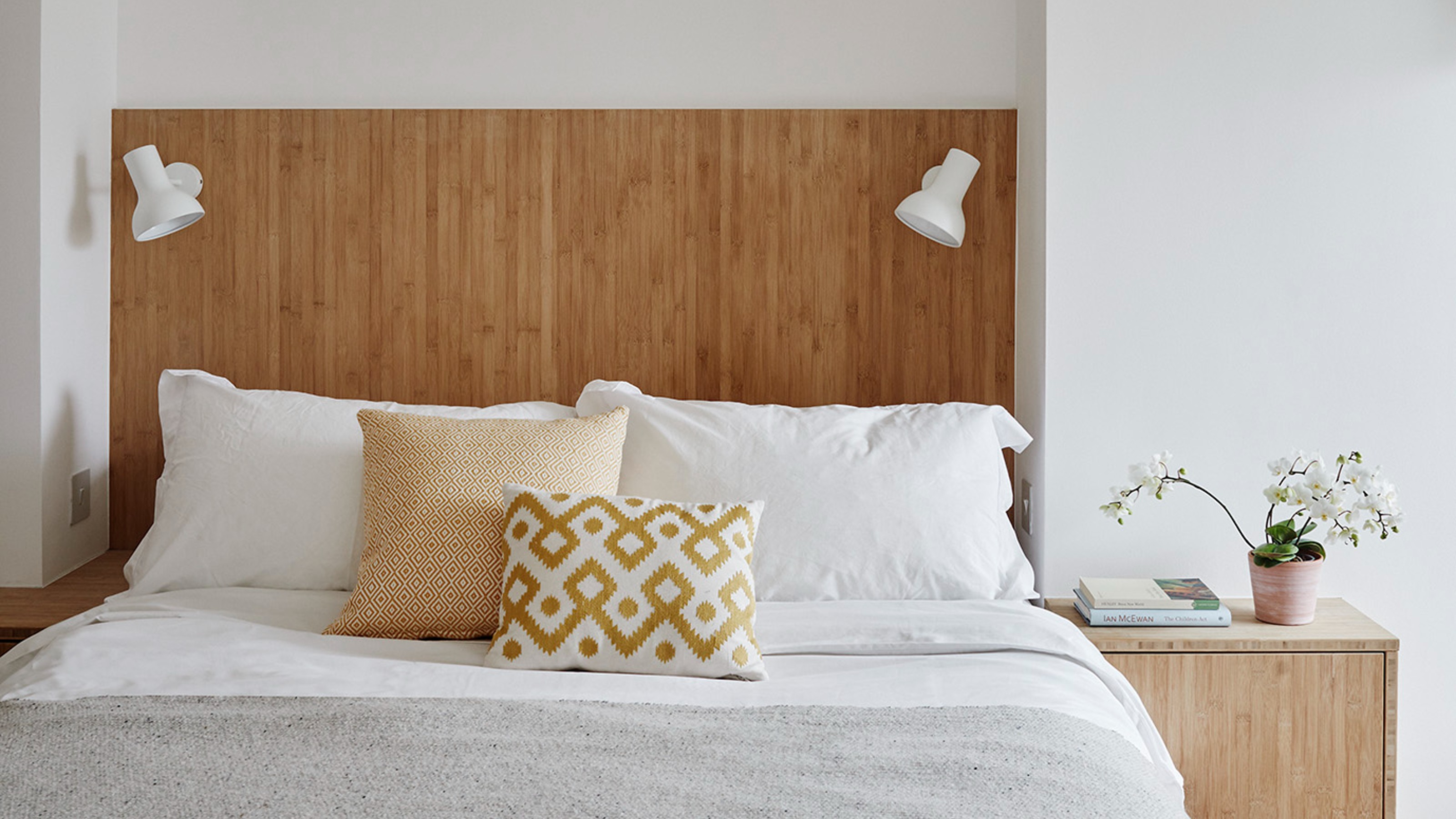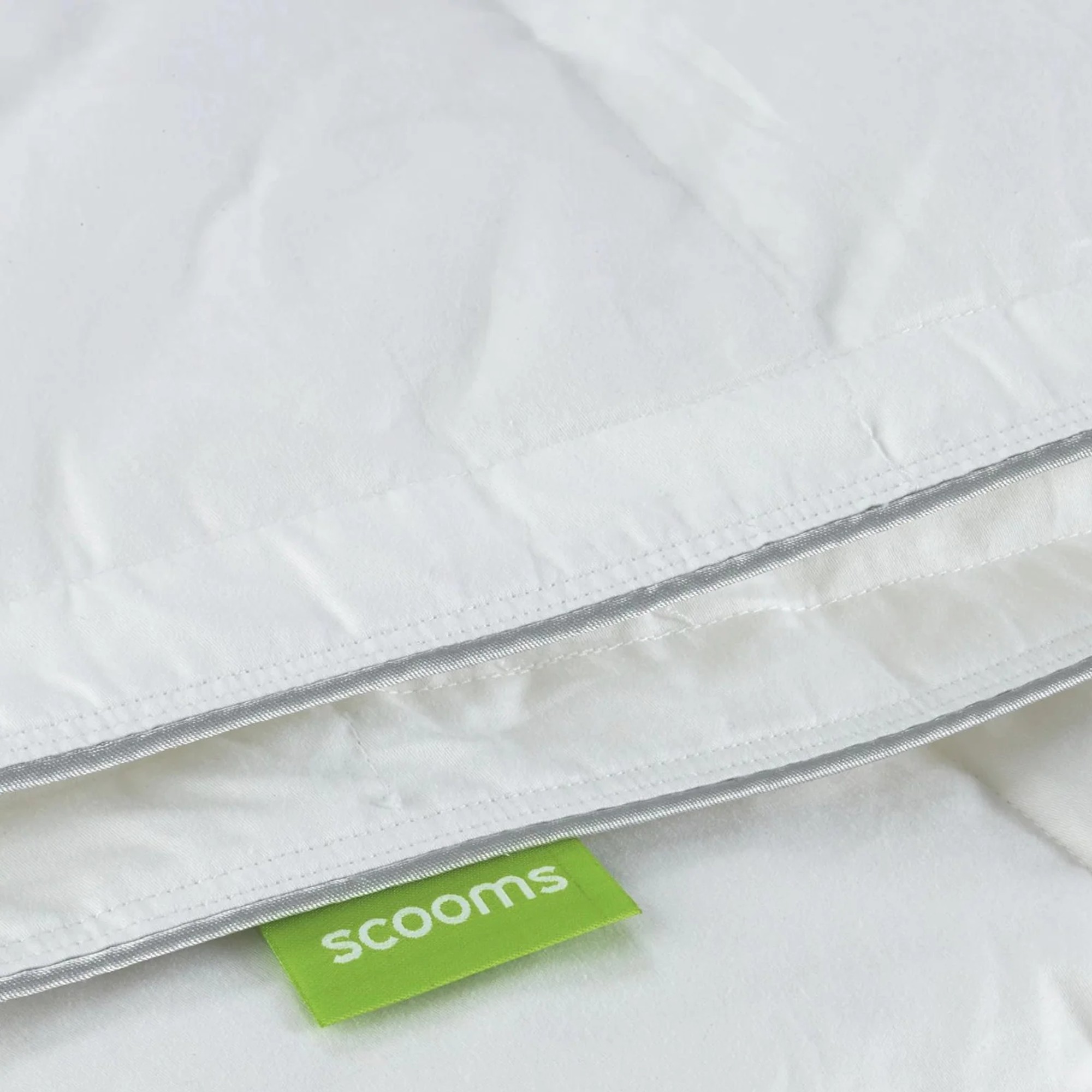Is an expensive duvet worth it? Bedding experts explain whether a high price point equals a better night's sleep
Microfibre, Hungarian goose down, British wool, or duck feather, there are many duvet options out there and they all come with vastly different price points. So how much should you really spend?

Quality sleep. We all crave it, yet few of us actually get enough of it. You may have tried all sort of methods to tackle poor sleep, but you could be overlooking one thing – your duvet. After all, we snuggle under it every night – surely, it plays a pivotal role in whether we get quality slumber. So in our never-ending quest for a good night’s sleep, we ask… is an expensive duvet worth it?
When it comes to which are the best duvets – synthetic, feather and down, or wool – opinions abound, and the choices can be overwhelming. But how much can our duvet selection truly affect sleep quality? Quite a bit, says clinical psychologist Dr Daniel Glazer from UK Therapy Rooms. ‘This simple bedding piece plays a subtle yet absolutely critical role in cultivating quality sleep by helping regulate body temperature throughout the night,’ he says.
‘Overheat, and we’re restlessly tossing and turning; get too chilly, and we're shivering ourselves awake. Either extreme ends up draining our energy reserves, leaving us feeling far from refreshed when it's time to face the next day,’ Dr Daniel continues.
So, if a good duvet can help us sleep better, should we splurge and invest in the best that money can buy? We asked a selection of sleep and bedding experts whether an expensive duvet is worth it.
What is the price range for duvets?
First, let’s look at how much duvets cost. A basic synthetic duvet – like the M&S Supremely Washable Duvet – starts from under £20, whereas a high-quality Hungarian goose down duvet – like the scooms Hungarian Goose Down Duvet – can set you back over £300.
Some duvets also take the word 'expensive' to a whole new level. John Lewis is currently selling The Ultimate Collection Made to Order Icelandic Eiderdown which starts at £4,935 for a single and goes up to £12,460 for an emperor size. Wow.
With such a wide price variation, it’s easy to feel unsure about what you should be paying, what benefits a bigger investment might bring, which duvet fillings are worth splurging on, and whether an expensive duvet is worth it. So, let’s take a look at why the cost of duvets can differ so significantly.

What can affect the difference in price between duvets?
We asked Holly Castle, Brand Manager at Snuggledown, to explain why costs vary so widely. ‘A whole range of factors can affect price point. The biggest factor is usually the material,’ she tells us. ‘Natural bedding usually comes with a higher price tag due to its higher quality. For instance, a feather and down duvet with cotton cover would come with a higher price tag than synthetic bedding,’ Holly continues.
Seeing as duvet fillings having the biggest influence on a duvet's price, we delved into some of the most common materials used:
Sign up to our newsletter for style inspiration, real homes, project and garden advice and shopping know-how
Synthetics
A synthetic duvet is one with a polyester filling, usually called a hollowfibre or a microfibre duvet. Because synthetics are manmade this is usually the most affordable duvet filling.
A synthetic duvet benefits from being easy to wash and dry. However, the material does have downsides. 'Synthetic duvet fillings tend to lack breathability' says Amy Lockwood, Ideal Home's Sleep Editor. 'Polyester is a petroleum-based material, which means it's similar to plastic. Although polyester duvet filling is combed into strands to make sure there's some airflow, if you imagine sleeping inside a plastic bag you can see why the fibres are prone to reflecting body heat and humidity back towards the sleeper. This can lead to night-time overheating which equals a disturbed sleep'.

The M&S Supremely Washable Duvet is a synthetic microfibre duvet made from recycled polyester. It's affordable and easy to care for as it can be machine washed and tumble-dried.
Feather and down
The feathers used in feather and down duvets are carefully selected and rigorously cleaned to remove dust, dirt, and allergens to meet the quality standards needed for bedding. Because of the labour involved, natural fillings are usually more expensive than synthetic options.
'A feather and down duvet can be one of the most luxurious duvet fillings', shares Ideal Home's Amy, 'but this is also the filling where I've found there to be the biggest difference in quality'.
'Affordable feather and down duvets tend to use duck feathers and have a higher feather-to-down ratio. The higher the percentage of feathers in the mix, the heavier and more clumpy the duvet can feel. You're also more likely to find feather quills can stick through the duvet cover over time, which isn't very comfortable'.
'In contrast, top-of-the-range feather and down duvets will use Hungarian goose feather and down which is softer. A more expensive feather and down duvet should also offer a higher ratio of down which makes for a super light, airy, and squashy duvet that feels like sleeping under a (well insulated) cloud'.

This 90% Hungarian goose-down duvet will instantly upgrade your sleep. It's super soft and luxurious, but it is also one of the most expensive duvets our team has tested.
Wool
Since the production of wool duvets relies on sheep farming, it requires ample time and resources, and wool is also in limited supply. Therefore it’s no surprise that it’s one of the more expensive filling options. However, the extra expense is not without its rewards.
Haldi Kranich-Wood, Bedding Product Specialist at British Wool, explains, ‘As a powerful insulator, wool traps warm air inside to keep you cosy during winter, and its moisture-wicking properties help release air and absorb moisture when temperatures rise.’
Then there is cashmere. Taken from the undercoat of cashmere goats who only produce on average 150-200 grams of cashmere a year, this filling provides extra softness and insulation. Production is also labour-intensive and time-consuming, which again influences the cost.

This breathable wool duvet is not only comfortable but machine washable, a rarity with wool duvets.
Other factors that can influence price
Along with fillings, the material used to make the cover can drive up cost, as can construction and craftmanship, which tog you opt for, sustainability and of course size.
How do you know you’re buying a good-quality duvet?
Other than deciding based on a specific filling type, it’s good to be informed about different accreditations and what they mean.
Emily and Jonathan Attwood from luxury bed and bath brand scooms suggest checking out what the manufacturer says about the materials used. ‘Read the information provided carefully and look for these top accreditations':
- Nomite - anti-allergen standard for house dust mite allergy sufferers.
- Oeko-Tex 100 - verifies tested against harmful toxins and chemicals.
Plus, for down and feather fillings:
- Single country source; by-product of the food industry.
- Downafresh - feather and down hygiene and cleanliness requirements to European standard EN 12935.
- Responsible Down Standard - ensuring down and feathers come from geese that have been treated well and never suffer from live-plucking; following the chain of custody from farm to product,’ Emily and Jonathan explain.

Can a ‘value’ duvet ever be a good buy?
Whilst we all know the old adage, ‘buy cheap, buy twice’, opting for a budget microfibre duvet isn’t always a bad idea. Theresa Schnorbach, a sleep expert from Emma - The Sleep Company explains, ‘Synthetic materials such as microfibre or hollow fibre polyester, for example, are made to mimic the feel of natural materials such as feather and down, but are generally easier to clean and more affordable whilst also offering breathability and being nonallergic.’
So, if you suffer from allergies and want a low-maintenance option, an affordable synthetic duvet could be the solution for you.

Final verdict - What should you pay for a duvet?
If you’re still struggling with the question is an expensive duvet worth it, why not look at it this way – the average person spends eight hours in bed a night, that is 2,920 hours per year which equates to 121.7 days out of 365. If you’re torn over whether to splurge, perhaps working out the cost per hour of use could help. After all, a third of the year is a long time to spend using a sub-par product, so investing in the best quality materials will be worth it in the long run.
However, what you should pay for a duvet really comes down to what your current budget will allow. If you can only stretch to a supermarket microfibre option at the moment, consider spending a tiny bit extra on a king-size because it might give you a more luxurious feel. As Danielle Mason, Head of Product Development at The Fine Bedding Company explains, ‘Opting for a larger duvet can provide extra comfort by ensuring full coverage, especially if you or your partner tend to move around during the night.’ Not only that, but it can help with aesthetics too; ‘A larger duvet adds a luxurious and cosy dive right into your duvet look to the bed,’ she continues.
And, lastly, if you have a bedmate, it might actually be worth taking inspo from our Nordic neighbours and spending a little more to get two single duvets rather than one large one. Dr Daniel Glazer says, ‘The Scandinavian sleep method is gaining popularity – using two separate duvets on a shared bed to avoid cover battles. This approach allows each partner to comfortably regulate their ideal sleeping temperature, eliminating the need for a nightly game of tug-of-war!’